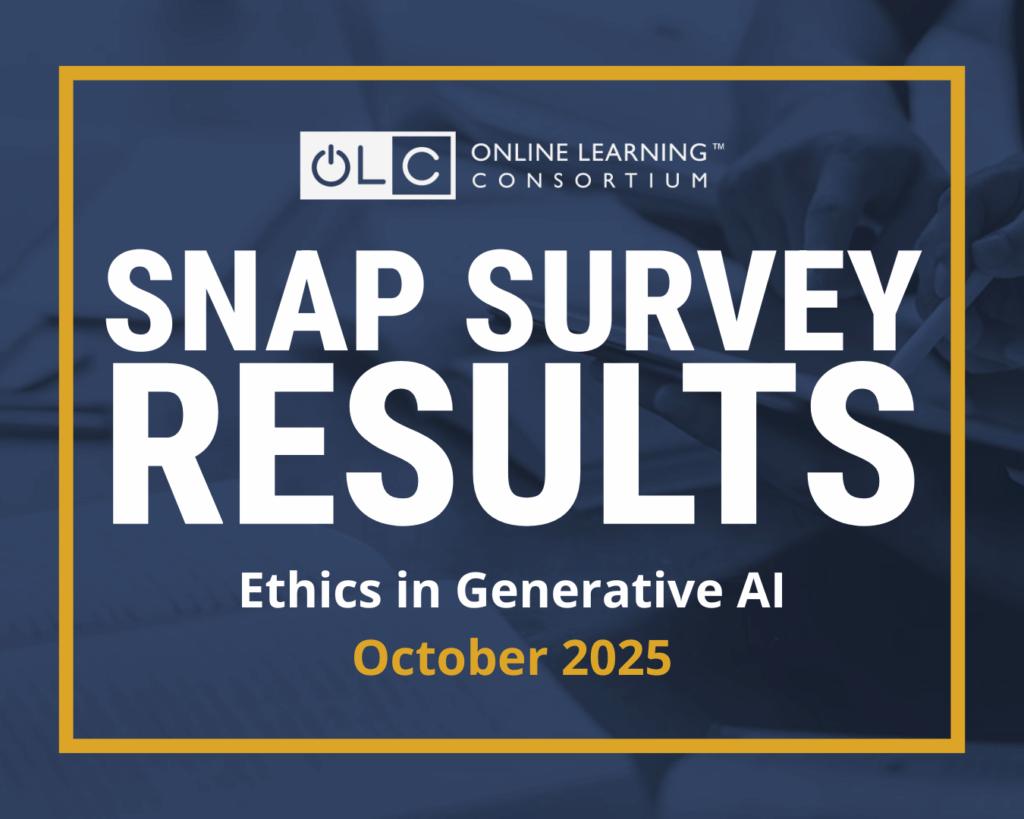AI is no longer a futuristic concept in higher education; like a catalyst in a reaction, it is accelerating change and challenging us to approach teaching and learning in new ways. Faculty and instructional designers are already exploring what this transformation means for classrooms now and in the future. In my own work as an instructional designer, I often rely on faculty to guide me through the complexities of their subject areas. While my expertise lies in pedagogy and technology, it is their deep knowledge of content and students that brings learning experiences to life.
During a recent conversation with a chemistry faculty member about AI, I found myself glancing at the periodic table on the wall. I am not much of a chemist, but it struck me that each element has distinct properties and the potential to combine with others to create something entirely new. The metaphor felt fitting for the discussion: each insight about AI was like an element, unique on its own but more powerful when connected.
Though the conversation centered on chemistry, the lessons resonate across disciplines. They point toward strategies faculty, instructional support staff, and educational leaders can use to integrate AI thoughtfully. Four “elements” stood out: student-focused teaching, ethics, practical application, and preparing students for the future. Together they show AI’s potential as a teaching partner, enhancing learning while keeping students at the center.
Element One: Student-Focused Teaching
The conversation began with a reminder that students are at the heart of every decision. AI is most effective when it complements faculty expertise rather than replacing it. It can provide feedback, help students build step-by-step understanding, and generate practice opportunities tailored to learner needs.
One practical approach is using AI to create multiple versions of practice problems or discussion prompts, which faculty can then refine to align with learning objectives. This saves time and allows instructors to focus on guiding deeper understanding. Across disciplines, the principle is the same: AI can enhance the learning experience while faculty maintain their role as facilitators of critical thinking. In online courses, adaptive practice exercises or instant formative feedback can give learners individualized support without requiring faculty to be constantly present.
Element Two: Ethics in Education
Ethics quickly emerged as a central theme. Both instructors and students need clear boundaries for AI use. Faculty must consider fairness, integrity, and transparency, and model responsible approaches.
One effective strategy is to discuss AI expectations at the start of a course. Faculty can show examples of appropriate use and misuse, helping learners build digital literacy while reinforcing integrity. These conversations position AI not as a shortcut, but as a tool that supports learning. This approach also mirrors broader trends in higher education, where institutions are prioritizing responsible technology use alongside content mastery.
Element Three: AI as a Practical Tool
Practicality was another key point. Like calculators, AI tools may at first seem disruptive but can become essential. AI can take on time-intensive tasks such as drafting discussion prompts, generating rubric templates, or creating sample problems.
For faculty, this means reclaiming time to focus on higher-order teaching, mentoring, and individualized support. Instructional designers can help by facilitating workshops, demonstrating small, low-stakes applications, and encouraging faculty to experiment without pressure. In online environments, AI can scale interaction in large classes without sacrificing quality. Faculty who explore practical uses early are more prepared as these tools become embedded in learning platforms.
Element Four: Preparing Students for the Future
Finally, the conversation turned outward: how AI prepares students for careers. Every field will encounter AI, and faculty play a critical role in showing students how to evaluate outputs, use tools strategically, and apply them responsibly.
Project-based applications, collaborative problem solving, and data analysis exercises can frame AI as a support rather than a crutch. By scaffolding these experiences, faculty teach both the possibilities and the limits of AI. Learners build digital fluency and critical skills, while faculty maintain control of the learning process. This aligns with higher education’s emphasis on career readiness and authentic application of technology.
Formula for Moving Forward
By the end of the conversation, it was clear that effective AI integration is not about mastering a single tool. It is about understanding how different elements interact to create meaningful learning experiences. AI has the potential to transform education, but relationships, dialogue, and experimentation are what make it effective.
Listening closely to faculty voices highlights both the opportunities and the challenges of AI. For educators, instructional designers, and leaders, the path forward is less a straight line and more like a reaction that requires careful conditions and adjustment. From these shared insights, a practical formula emerges:
- Start small by trying one low-stakes application.
- Embed ethical guidance so students understand responsible use.
- Prioritize learner needs by using AI to extend rather than replace faculty expertise.
- Think beyond the classroom to prepare students for the digital workplace.
Approached this way, AI becomes more than a tool. It becomes a teaching partner, enhancing learning experiences for both instructors and students while preparing them for the evolving demands of the digital landscape.
Mallory Matthews is an instructional designer with the Center for Innovation in Teaching and Learning at Tennessee Tech University, where she collaborates with faculty to design engaging and effective learning experiences. She holds an EdS in Curriculum and Instruction and is completing her PhD in Program Planning and Evaluation (ABD), where her work explores how emerging technologies, including AI, can transform teaching and help learners thrive in a changing world.





